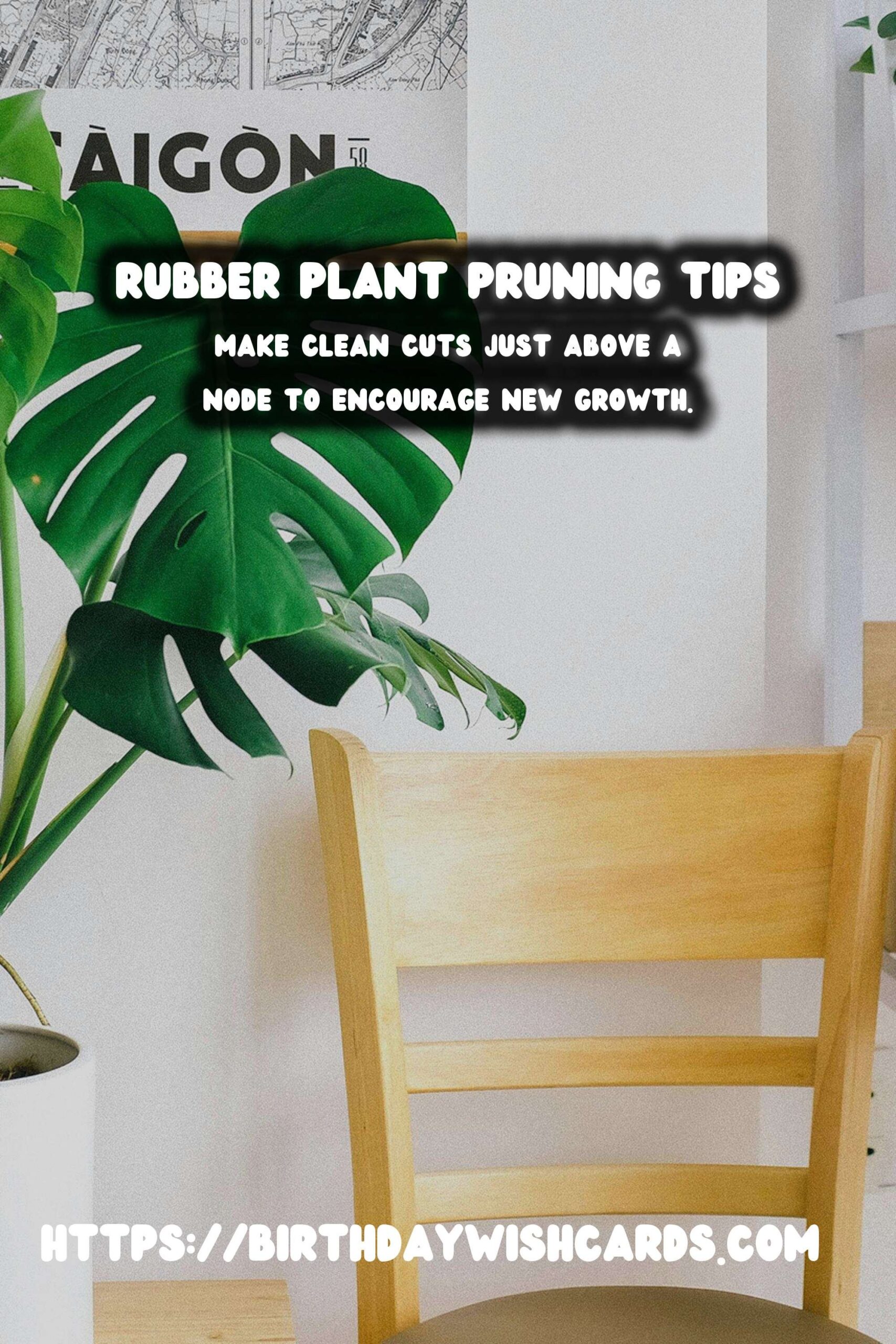
Rubber plants are a popular choice for indoor gardeners due to their lush foliage and relatively easy maintenance. However, as they grow, they can become quite large, making pruning an essential part of their care routine. This article will guide you through the process of pruning your rubber plant to maintain its size and shape, ensuring it remains a beautiful addition to your home.
Understanding Your Rubber Plant
Before diving into pruning, it’s important to understand the nature of rubber plants. Scientifically known as Ficus elastica, these plants are native to Southeast Asia and can grow up to 50 feet in their natural habitat. Indoors, they typically grow to about 6-10 feet, but without proper care, they can quickly outgrow their space.
Why Pruning is Important
Pruning is crucial for controlling the size of your rubber plant. It helps in managing the plant’s height and encourages bushier growth by promoting the development of side branches. Additionally, pruning can remove any dead or diseased leaves, improving the overall health and appearance of the plant.
When to Prune Your Rubber Plant
The best time to prune a rubber plant is during its active growth period, which is typically in the spring or early summer. Avoid pruning during the plant’s dormant phase in the winter, as this can stress the plant and hinder its growth.
Tools You Will Need
Before you start pruning, gather the necessary tools. You will need a pair of sharp pruning shears, a clean cloth, and some rubbing alcohol. The alcohol is important for sterilizing your shears to prevent the spread of disease.
Steps for Pruning a Rubber Plant
Step 1: Inspect the PlantBegin by examining your rubber plant. Look for any dead, diseased, or damaged leaves and branches. These should be your primary targets for pruning.
Step 2: Sterilize Your ToolsUse the rubbing alcohol to clean your pruning shears. This minimizes the risk of transferring diseases to your plant.
Step 3: Make the CutsWhen you’re ready to prune, make clean cuts just above a node (the point where a leaf is attached to the stem). This encourages new growth. If you’re looking to reduce the height, cut the main stem back to the desired size.
Step 4: Encourage Bushier GrowthTo promote a bushier plant, prune the top of the plant. This will encourage lateral growth, creating a fuller appearance.
Step 5: Clean UpRemove all pruned leaves and branches from the pot to prevent any potential disease or pest issues.
Aftercare for Your Pruned Rubber Plant
After pruning, care for your rubber plant by maintaining its usual watering and feeding schedule. Keep the plant in a well-lit area but out of direct sunlight, and monitor it for any signs of stress or disease.
Common Mistakes to Avoid
Avoid over-pruning your rubber plant, as removing too much foliage can stunt its growth. Also, ensure you’re making cuts at the right spots, just above a node, to encourage healthy new growth.
Conclusion
Pruning is an essential part of caring for a rubber plant, especially if you want to control its size and shape. By following these steps, you can keep your plant healthy and aesthetically pleasing. Remember, a little attention goes a long way in maintaining the beauty of your rubber plant.
Rubber plants can become quite large, making pruning an essential part of their care routine. Pruning helps in managing the plant’s height and encourages bushier growth. The best time to prune a rubber plant is during its active growth period, typically in the spring or early summer. Use sharp pruning shears and sterilize them with rubbing alcohol before pruning. Make clean cuts just above a node to encourage new growth.
#RubberPlants #PlantCare #Pruning #GardeningTips #IndoorPlants

